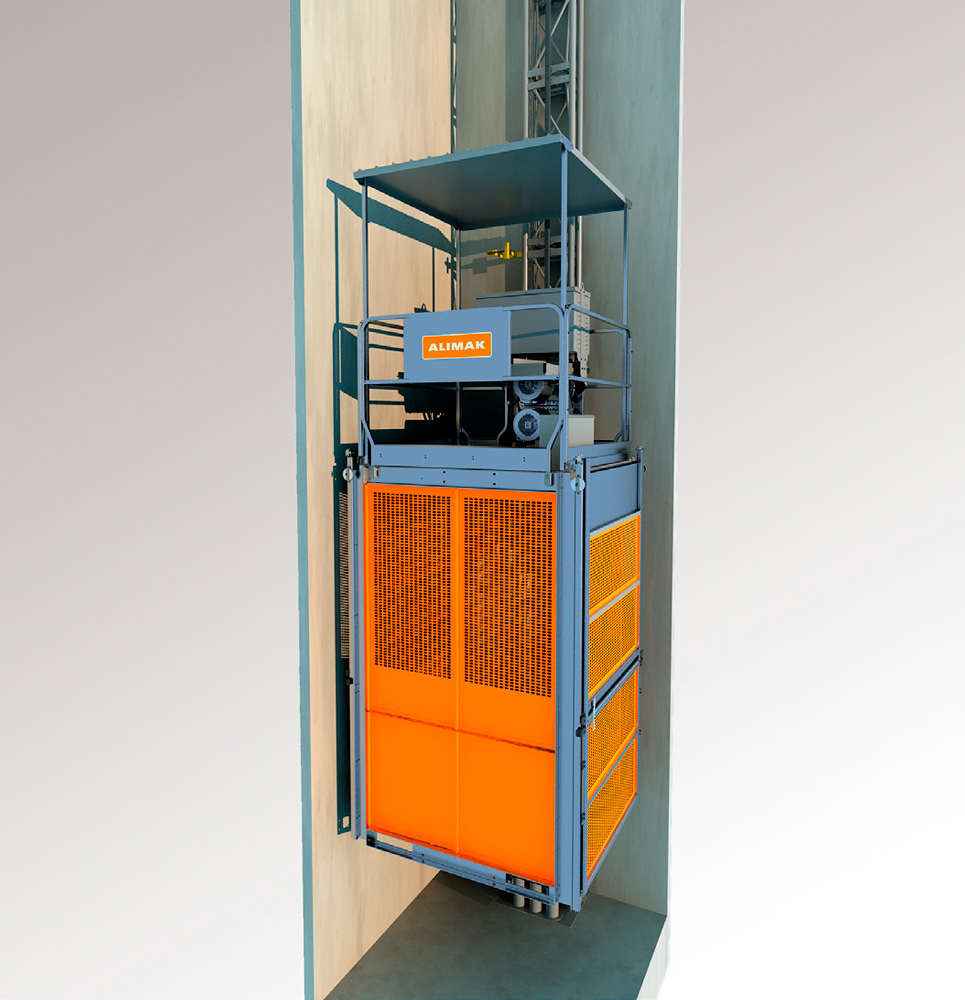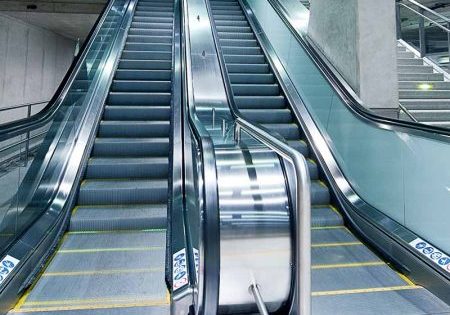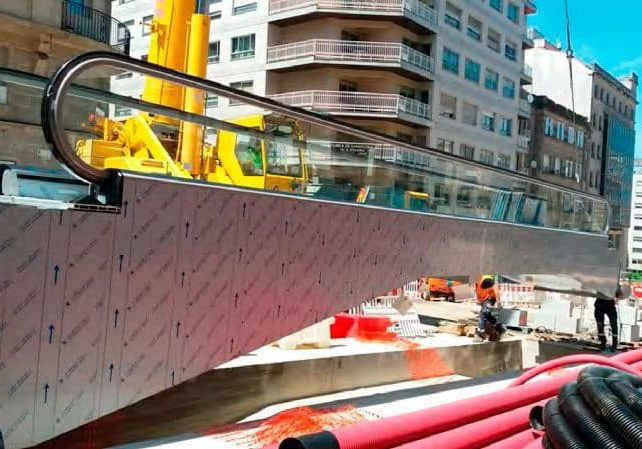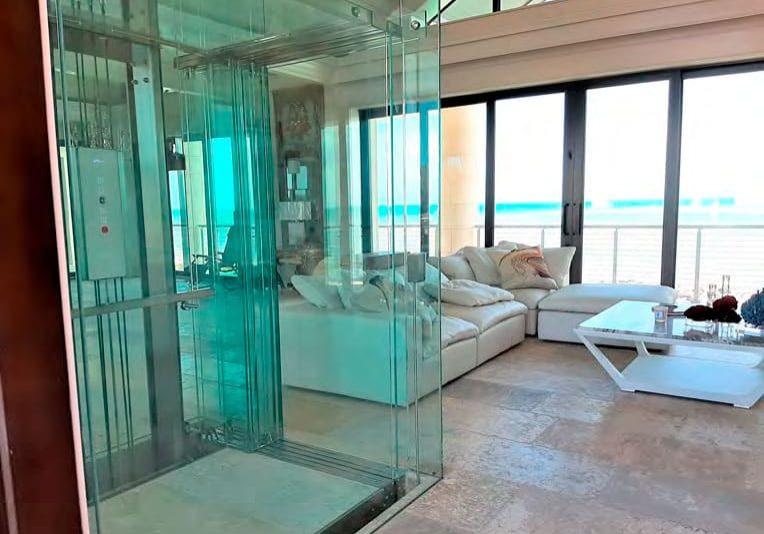Newest Equipment
Mar 1, 2021

Construction hoist, escalator and touchless controls are now available.
New Construction Hoist for Elevator Shafts
Alimak of Skellefteå, Sweden, has launched the new Alimak LSH construction hoist in China. Designed for use inside elevator shafts during building construction, the hoist can serve “the highest floors” of projects and “can be installed quickly with jumping operations doubling in efficiency,” the company touted. Its internal size is 1.8 X 1.5 m and 2.8 m tall. Its cabin can transport multiple workers or goods up to 2000 kg. Its rack-and-pinion technology precludes the need for a counterweight or machine room. Before being dismantled, it can also support the installation of elevator guide rails inside the shaft. The Alimak LSH can then be dismantled by tower crane upon completion of the construction work if the shaft is still open at the top. If that is not the case, the bolted design of the hoist still allows for easy dismantling and removal when the shaft is already closed.
The product has safety rails and fall protection on its roof. It is also equipped with a large-display, stainless-steel control panel and a 7-in. touchscreen with protective glass and IP54 ingress protection. Alimak’s “intelligent hoist monitoring system” delivers real-time hoist status information.
Touchless Control Solutions
thyssenkrupp Elevator has launched several touchless control solutions for elevators. Touchless Call and Elevator Pass are based on QR code technology to enable users to control and operate the elevator via smartphones or wearables. With online and offline usage features, they are applicable across a wide variety of segments, including offices, hotels, hospitals and residential buildings. Both are available for elevators from thyssenkrupp Elevator and other manufacturers. Touchless Call uses QR codes placed at each landing and inside the cabin. Passengers can use these to operate the elevator via a virtual control panel on their smartphones without having to touch buttons.
Elevator Pass operates like an airplane boarding card. QR codes can be generated anytime via an app, or received via email, text message or in paper form. The user then scans this code at a reader installed at the landing, and the elevator calls are generated automatically for the origin and destination floors. The solution was designed to be installed easily and does not require the use of an additional app. If the QR codes of elevators within a facility need to be changed, new ones can be easily created and instantly override the previous codes. No internet connection or smartphone is required.
New Mitsubishi Escalator Focuses on Safety, Energy Savings
Tokyo-based Mitsubishi Electric Corp. has launched its new u series of escalators, designed to improve passenger safety while achieving significant energy savings over previous models, the company announced in December 2020. The u series will feature a “slow-stop” function to slowly decelerate the escalator during an emergency stop and will offer an optional “speed change operation,” which allows for low-speed running of the unit. These functions are designed to reduce the risk of passengers falling. Another option, built-in UV light, can lower microbial infection risks.
For energy savings, the u series has a variable-voltage, variable-frequency controller to optimize motor efficiency. An optional function can slow or stop the unit when there are no passengers, cutting energy consumption by up to 30%. Other energy cost savings are achieved by a regenerative converter that creates electricity for other uses in the building and optional low-consumption, long-life LED lights. Finally,
the new model is available with optimized equipment space and features a 25% reduction in truss weight without any loss of structural strength.
Get more of Elevator World. Sign up for our free e-newsletter.









